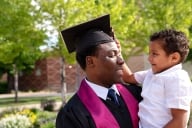You have /5 articles left.
Sign up for a free account or log in.
When Susan Fiske, a professor of psychology, arrived at Princeton University six years ago, she knew that charges of racism and sexism haunted its history.
“I came here wondering if it was going to be a privileged, arrogant place,” she said Thursday, noting that her main area of scholarship involves prejudice issues. “And now, I really don’t think it is. Today’s Princeton is an intimate Ivy where people know and respect each other. In terms of where the university was 35 years ago, it’s night and day.”
Fiske is one of several Princeton faculty members, students and alumni who have been compelled to share their understanding of the institution’s history and its relation to present conditions there as a result of allegations brought against Supreme Court nominee Samuel A. Alito, Jr. during his confirmation hearings this week.
In recent days, the public has learned volumes about a now-defunct university group called the Concerned Alumni of Princeton. Founded in 1972 by alumni who were disturbed that Princeton had started to admit women, some members also claimed that the university had lowered its standards to admit more minority students. The group’s membership roster reads like a who’s who of politics, including notables from across party lines.
Alito, a 1972 graduate of Princeton, listed his membership in this group in a 1985 application for a political appointment in the Reagan administration’s Justice Department, but he testified on Wednesday that he has no memory of joining the group and that he would not have done so if he had known about its positions. Alito said during his Wednesday hearing, “I would never be a member of an organization that took those positions.”
This week, after a review of several CAP documents requested by Sen. Edward Kennedy could not prove that Alito had been a member of the group, many political commentators said that he was effectively able to wash his hands of this matter.
But the existence of CAP, which ended in 1986, still looms large on the minds of alumni, professors and students, especially after it became a national news story this week.
“Certainly, Princeton had a vicious, alumni attack machine in CAP,” said Stephen Dujack, a 1976 graduate of the university and a writer based in Alexandria, Va. “But I don’t know that CAP was reflective of the overall climate on campus -- or just the opinions of a bunch of white guys afraid of losing power.”
He noted that during his time attending the university in the 1970s, gay students often held parties that were attended by straight students who supported their rights.
Asheesh K. Siddique, a junior studying history, thinks that CAP’s presence on campus was actually a good thing for Princeton. “CAP was formed because Princeton was trying to shed its disappointing past by making extensive efforts to be more welcoming to minorities and women,” he said. “CAP was resisting those efforts, but those efforts were the right thing to do. All that CAP meant was that a bunch of backward alumni were upset that the university had decided to shape up and reform itself. That reflects badly on CAP’s members, not Princeton.”
Dujack, who will submit written testimony to the Senate Judiciary Committee, suggesting that its members reject Alito’s nomination, has long been a critic of the group. In fact, he said that a 1986 article he wrote for the Princeton Alumni Weekly helped “put the organization out of commission.” In that article, he wrote that in 1973 “CAP mailed a fund-raising pamphlet to alumni in the business community charging that ‘a student population of approximately 40 percent women and minorities will largely vitiate the alumni body of the future.’”
Fiske said that even when she started her position, Princeton “had the reputation as being one of the most -- if not the most -- conservative of the Ivy League schools.” One of the explanations for that, which Fiske said is a commonly held belief on campus, is that Princeton is the southernmost Ivy League institution. Southern families, which tended to be more socially conservative, historically sent their white sons off to get an education there, according to Fiske.
But Fiske said that administration changes, including the hiring of President Shirley M. Tilghman in 2001, have led to a “more diverse campus than ever before.” In fact, approximately one-third of the campus today is composed of minority students. Today’s Princeton has noted scholars of multiculturalism, and active groups of minority, gay, and feminist students -- and while there is periodic debate about many social issues, no one questions coeducation.
Thomas Bohnett, a student studying public policy at the university, said Thursday that “things are moving in the right direction at Princeton.” “[F]rom my perspective, Princeton is no more or less sexist, racist, or homophobic than its peer institutions, he said. “But that doesn't mean that these aren't issues on campus -- only that Princeton isn't special in these regards.”
“I don't feel like I'm stigmatized or unfairly treated by others here because of my race,” added Siddique, noting that as an Indian American, he’s an ethnic minority. “Princeton’s main problem today is economic diversity -- it's struggling to make this extraordinary educational experience available to a broader swath of American society. There is a lot more tolerance of sexual minorities here as well, which is largely concurrent with trends among most American college students.”
Regarding the renewed attention to CAP, Fiske said that she hopes that the “inaccurate and dated” views of the group do not have an effect on future student’s perception of today’s Princeton. “CAP was a marginal group even in its heyday, and today represents the view of only an aging group of stodgy alumni,” said Bohnett. “I think people can put all of this in context for themselves -- the Princeton of today is different.”








